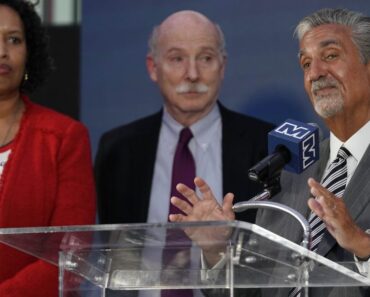This post was originally published on this site
Anticipation was
running very high ahead of Thursday night’s unveiling of Tesla’s
latest vehicle, the Cybertruck. That name had been floating around
for weeks, and though CEO Elon Musk used it himself, it felt like a
placeholder for a more subdued, conventional moniker to be revealed
last night.
That didn’t happen. It turns out that Cybertruck is the actual name—and it’s just about right.

No images of the Cybertruck had leaked ahead of last night’s event, heightening the surprise when Musk unveiled a hulking beast of unpainted steel planes and sharp angles. The Cybertruck looks absolutely nothing like the pickup trucks analysts had expected it would compete with, and wags on Twitter were quick to compare it to something out of the Mad Max or Blade Runner movies.
Even professional observers seemed stunned, with longtime Tesla analyst Toni Sacconaghi of Alliance Bernstein opening his comment on the reveal by saying that the Cybertruck “looks weird… like, really weird.”
The aesthetic strangeness of the Cybertruck explains why Musk has repeatedly signaled soft expectations for its sales, despite how ripe a target the truck sector is. Approximately 2.5 to 3 million trucks priced above $30,000 are sold globally each year, which Sacconaghi estimates is about 65% of the size of the market for sedans like the Model Y or Model 3.

Going into last night’s reveal, there were already reasons to doubt that an electric vehicle could make inroads into the truck market. “With trucks, it’s a balance of comfort, capability, and the actual brand,” says Alyssa Altman of the tech consultancy Sapient. The brand associations of trucks, with their focus on toughness and power, don’t intuitively mesh with the clean-energy ethos of Tesla and are sometimes even hostile to it.
“The south or southwest or the middle of [America],” says Altman, “I don’t think you’re going to get people who are passionate about EV.”
But the Cybertruck we’ve now seen may be an even harder sell to those markets than a battery-powered F-150 knockoff. Sacconaghi now projects that “Cybertruck is likely to be a niche offering with sales of perhaps 50K units a year or less,” and that it “will not materially impact Tesla’s financials or investor sentiment.”
Even that may even be optimistic—Tesla’s stock was down more than 5% the morning after the Cybertruck reveal, suggesting serious investor skepticism.
Though disappointment and confusion over the design dominated reactions, Cybertruck appears poised to deliver—or even overdeliver—on a number of key performance and other metrics.
Musk had previously signaled the truck would start at a price under $50,000, and last night he announced that the cheapest Cybertruck would actually have a base price just under $40,000. That would substantially expand the potential market, though the vehicle’s profitability at that price is an open question.
Musk also revealed that the truck will be available in battery ranges from 250 miles to 500 miles. That top range vastly outperforms the 370-mile top range of the Tesla Model S, likely because the truck’s larger chassis simply has more space for batteries.
The Cybertruck will also have capabilities that might appeal to contractors and other professional truck users. Musk said it will be able to tow 14,000 pounds, about 800 pounds more than the most powerful configuration of Ford’s mega-popular F-150—though far less than the unrealistic 300,000 pound towing capacity that had been circulating among some Tesla fans.
The Cybertruck will have 3,500 pounds of payload capacity and 100 square feet of exterior storage. Though that includes both the Cybertruck’s bed and other storage areas, it beats the F-150, whose cargo capacity ranges from 52.8 to 77.4 square feet. The Cybertruck also includes worksite perks such as being able to run tools directly from the battery instead of a generator and a built-in compressed air piped from the suspension system.
But for many traditional truck buyers, those utility advantages may simply be ignored in the face of the truck’s extreme aesthetics. Musk’s big design swing seems more likely to attract a different kind of buyer.
“They’ve talked about marketing to a luxury consumer who wants to own a truck,” says Altman, which is a small though potentially influential market segment. In particular, the truck’s promised performance, including both a 2.9 second 0-60 acceleration and pneumatic suspension for off-roading, seem more aimed at weekend fun than workday utility.
Last night’s pitch fell short in one particularly obvious way. Musk’s claim that the steel body was effectively bulletproof was met with cheers by the invited crowd at the Tesla Design Center in Hawthorne. But a demo of supposedly extra-tough window glass, involving what looked like a steampunk magician, went awry when a steel ball was able to smash two of the Cybertruck’s windows. Musk completed the presentation standing in front of the panes of shattered glass.

More must-read stories from Fortune:
—How 5G will transform the electric vehicle industry
—Ford’s Mustang Mach-E is a radical gamble on an electric future
—Why acting Renault CEO isn’t worried about autonomous cars killing sales
—Tesla could deliver ‘full self-driving’ within weeks. What that means for drivers—and Tesla’s stock
—Inside James Dyson’s costly decision to kill his electric car
Follow Fortune on Flipboard to stay up-to-date on the latest news and analysis.




